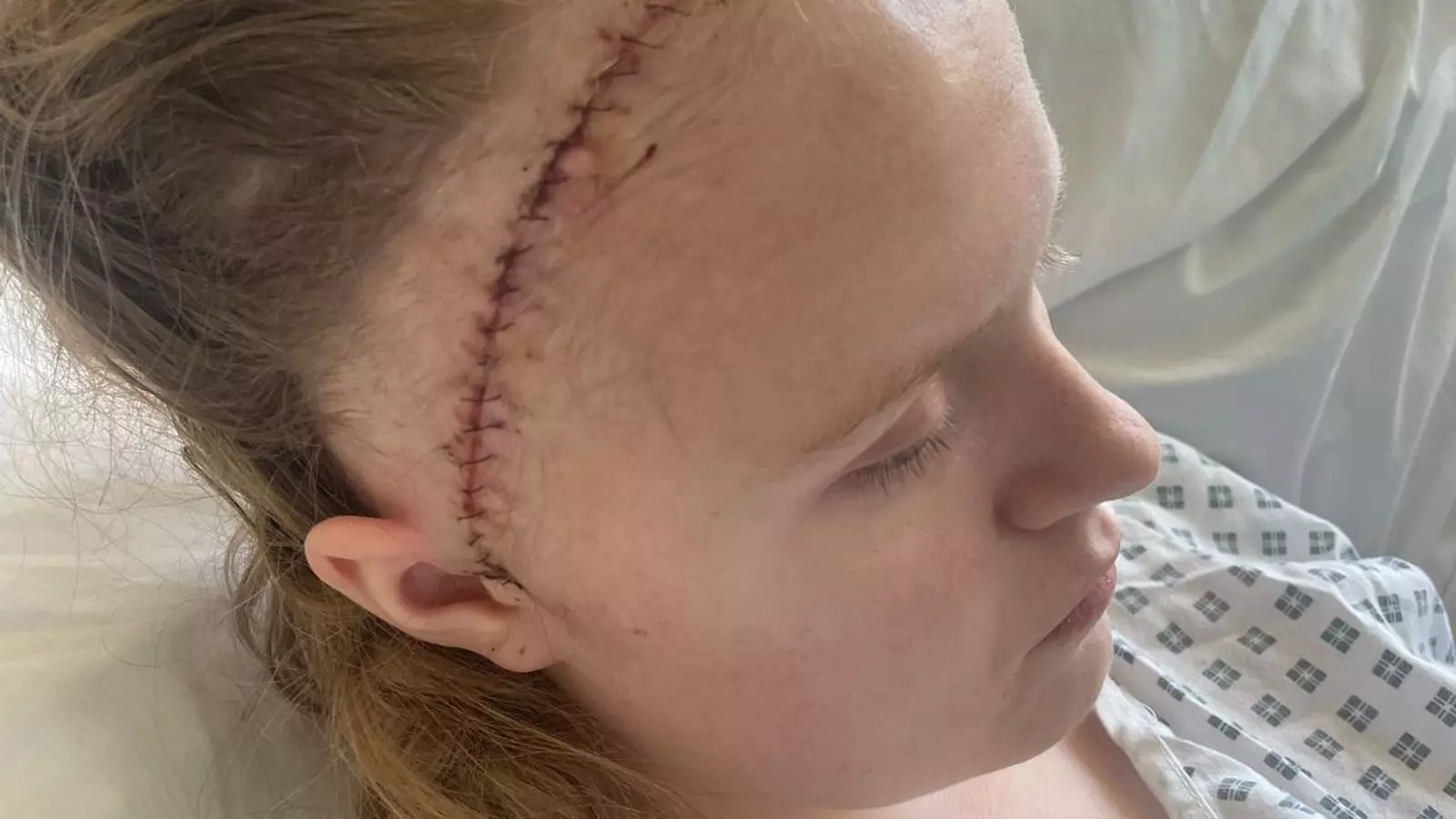In life, we often stroll into the realm of innocence, completely unaware that shadows can lurk beneath the surface. Such shadows took the form of a cavernoma in the life of 15-year-old Ellie Morris-Davies, who was abruptly yanked from her adolescent bliss into an existential struggle defined by medical chaos and emotional turmoil. The sheer audacity of her suffering begs for a portrayal that transcends mere sensationalism; it’s an instance that showcases the fragility of youth against the relentless tide of unforeseen health challenges.
Ellie’s fight began with what one could easily dismiss as a “bad migraine,” a phrase crammed with familiarity but devoid of the shattering implications that lurked in her skull. As the young performer started experiencing debilitating symptoms—persistent headaches, nausea, and a sensitivity to light—her energetic spirit began to flicker, smothered by the weight of an illness that looked innocuous but lurked dangerously, like a thief in the night. The emotional strain her mother Joanne endured while helplessly watching her daughter suffer is a reflection of the countless families facing similar crises. Yet, the fight against the cavernoma was not simply a battle of physical endurance; it was also a tumultuous mental journey that Ellie navigated with an inspiring level of grit.
A Medical Odyssey Unfolds
The prognosis came with a whirlwind of chaos: nine surgeries in under three months. The sheer complexity of operations, including the unprecedented surgical method of storing part of her skull in her stomach, seems ripped from the pages of a medical thriller. However, to fully appreciate this ordeal, one must step into the emotional landscape of this young girl. At one moment, she was dancing carefree; in another, she hovered on the precipice of despair, plagued by the uncertainty of her survival.
This was not merely a challenge of physical revival; it became a cerebral and emotional battleground that tested the mettle of everyone involved. Ellie’s transition to intensive care echoed through the hallways of Alder Hey Children’s Hospital—a sanctuary morphing into a battleground where hope intertwined with desperation. The knowledge that one in 600 people live with a symptomless cavernoma underscores how rare yet devastating these episodes can be. More often than not, individuals remain ignorant of the ticking time bombs silently existing within them.
The Power of Rehabilitation and Indomitable Spirit
The aftermath of Ellie’s numerous surgeries proved even more daunting. While the surgeries had initially saved her life, they also plunged her further into the depths of dependency as her body began a long and painstaking journey to regain functionality. However, what stands out most in this narrative isn’t merely her struggle against adversity but rather her indomitable spirit—her relentless pursuit of recovery.
Despite the harrowing experience of losing the ability to walk, talk, and eat—a trifecta of life’s most essential functions—Ellie refused to be defined by her condition. She emerged not just as a patient but as a beacon of tenacity. Her optimistic attitude, bolstered by daily physiotherapy and encouragement from her dance teacher, illuminated a path where despair might easily have taken residence. Watching her relearn how to move, how to speak, and how to savor life’s simple pleasures showcases resilience in one of its purest forms.
It is in this spirit of unwavering determination that Ellie recently returned to the stage, sharing her voice with the world once more. The emotional resonance of her performance is not just rooted in her artistic expression; it becomes a cathartic release, a triumph of spirit resonating deeply with every soul that dares to witness it.
Lessons from a Young Survivor
Ellie’s story transcends mere survival—it offers an intense reflection on human resilience and the power of passion as a form of recovery. Her narrative serves as a powerful reminder that beneath the veneer of everyday normalcy, each of us carries the potential for dramatic upheaval, seasoned with both fragility and strength. The societal narrative surrounding health must, therefore, pivot from mere statistics to the celebration of individual stories, illustrating the vibrancy of life even in the face of challenge.
Too often, stories of adversity conclude with platitudes about triumph and recovery. However, Ellie’s journey underscores that the struggle is ongoing. There is no instant resolution to pain; it is a journey walked step by step—sometimes backward, often forward, but always with relentless resolve. Ellie Morris-Davies has not just learned how to walk again; she has embodied the very essence of human endurance against the winds of fate, serving as inspiration for countless others who fight silent battles of their own.


Leave a Reply